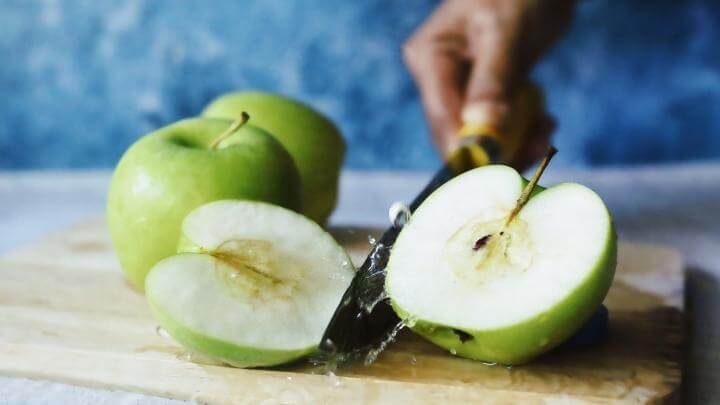Fiber is the closest thing to a true superfood that we have. Although most people praise the digestive benefits of fiber, getting your daily recommended intake of fiber benefits much more. Unfortunately, only 5% of people in the U.S. are getting this daily intake.
Recommended Daily Fiber Intake
So many diets have people focusing on protein and ignoring carbohydrates that fiber has been forgotten. According to the Institute of Medicine’s daily recommendations, the target fiber intake for women is 25 grams of fiber, while men should get 38 grams. Currently, Americans only get an average of 15 grams of fiber per day, creating a significant ‘fiber gap.’ A gap that is now a major health concern.
Why We Need Fiber
On any given day, 40% of Americans eat fast food, which is low in fiber as well as other essential nutrients. Instead of snacking on fruits, nuts, and seeds, convenient, processed food is the more popular choice. But, this is not how the human body evolved. Our ancestors followed a frugivore diet, consisting of fiber-rich roots, fruits, nuts, and seeds, and high-in-fiber carbohydrates like oats.
Over the centuries, fiber has been taken away, leaving people today consuming a fraction of the fiber that we evolved with. What is to blame for this change? Fad diets, a perceived lack of time to cook at home, meat replacing legumes as the main protein source, and changes in agricultural practices that boost produce size and taste but strip fiber and nutrients.
Diet is the number one influence of digestive health and gut bacteria activity, and studies of our hunter-gatherer ancestors show that the further away people are from processed foods, the more diverse their gut microbiome is. As a result of not getting enough dietary fiber, this diversity is missing in the majority of people today, essentially starving the gut.

Why Is Fiber So Important
Fiber not only supports proper digestion, nutrient absorption, and healthy bowel movements but by enhancing microbiome diversity, it helps:
♦ Maintain healthy cholesterol levels for better heart health
♦ Support healthy blood sugar levels for metabolic health
♦ Promote healthy blood pressure for circulatory health
♦ Maintain a healthy weight
♦ Promote a healthy immune system response
♦ Support normal energy and stamina
♦ Support brainhealth and cognitive function
By working to close the fiber gap, you can nourish your microbiome, increase gut diversity, and get your health back on track.
How To Increase Fiber Intake
And how exactly can you close that gap? To get more fiber, researchers recommend increasing the diversity of your diet instead of relying on processed fiber-enriched bars or snacks. Just like with vitamins, your body needs many different types for whole-body health. A diverse diet will provide multiple types of fiber for multiple health benefits.
To start closing the fiber gap in your diet, eat more of these foods:
♦ Pumpkin seeds (5.2 grams of fiber per ounce)
♦ Sweet potatoes (3.6 grams of fiber per medium-sized potato)
♦ Pears (5.5 grams of fiber per ¼ cup)
♦ Green peas (5.2 grams of fiber per ½ cup)
♦ Navy beans (9.3 grams of fiber per ½ cup)
♦ Raspberries (8.0 grams of fiber per 1 cup)
♦ Chia seeds (10 grams of fiber per ounce)
♦ Avocados (10 grams of fiber per avocado)

Types of Fiber
Fiber is a group of plant-based carbohydrates. These are different from other carbohydrates like starches and sugars as we cannot directly digest or absorb fibers. There are several different types of fiber. Each is processed differently in the gut, providing different benefits for your health.
♦ Soluble fiber: Fiber that dissolves in water is soluble. This fiber supports healthy cholesterol and blood sugar levels and is commonly found in fruits, vegetables, legumes, and oats.
♦ Insoluble fiber: This type doesn’t change during digestion, adding bulk to stools to promote healthy bowel movements. This fiber is commonly found in wheat, vegetable, fruits with edible seeds, brown rice, and rolled oats.
♦ Fermentable fiber: Both soluble and insoluble fibers can be fermentable. These are fibers metabolized by the bacteria in your gut, producing short-chain fatty acids that are important food sources for other gut bacteria, promoting healthy microbiome balance. Short-chain fatty acids also help support normal blood sugar levels.
More Tips on Increasing Fiber Intake
For many Americans, increasing fiber intake is easier said than done. But, in addition to eating more of the high-fiber foods listed above, these tips make it easy to increase your daily fiber intake:
♦ Include at least one serving of whole-grain with each meal
♦ Eat at least five servings of fruits and vegetables each day
♦ Choose fruit, vegetables, and popcorn (4 grams of fiber per ounce) instead of chips and processed snacks
♦ Add nuts and seeds to your yogurt, cereals, or salads
♦ Choose fruits over sugary snacks for dessert
♦ Leave the peel on your fruits and vegetables
♦ Eat more fresh fruits instead of drinking fruit juice
♦ Eat whole-grain versions of bread, pasta, rice
♦ Add beans or grated carrots to your salads
♦ Add sliced bananas to your cereal
Suppose dietary restrictions or limited access to a diverse diet interfere with getting your daily dose of fiber. In that case, a quality supplement can help reach the recommended intake amount each day.

Symptoms of Too Much Fiber
As you work to bring more fiber into your life, it is important to monitor intake so as not to consume excessive amounts. There can be uncomfortable symptoms associated with getting too much fiber (more than 70 grams per day), including:
♦ Bloating and gassiness
♦ Stomach cramps
♦ Dehydration
♦ Constipation
♦ Feeling too full
Because fiber increases stool bulk and stimulates gut bacteria activity, the symptoms will be largely digestive. You can help to alleviate discomfort by drinking more water and getting regular exercise.
Getting Fiber Made Easy
With a carefully-selected proprietary blend of broad-spectrum, soluble and insoluble fibers that offer 20% of the RDI, CardioFitMD® is the cardiologist -formulated solution to help ensure you don’t fall into the “fiber gap”.
This all-in-one nutritional support drink offers more than just fiber. The powerful probiotics, beetroot powder, and 20 essential vitamins and minerals all work together to promote cardiovascular, circulatory, immune, and digestive health and support healthy weight management, stamina, and energy.
With CardioFitMD® , fiber tastes good and has the nutritional backup it needs to support a lifetime of health.

The Bottom Line
Increasing fiber intake will close the fiber gap and support gut diversity, which sits at the center of digestive, heart, and whole-body health. For the millions of Americans that do not get enough daily fiber, it is not too late. Adding fiber is as easy as a bowl of oats for breakfast, seeds and beans added to your salad, beans added to your salad, fresh fruit for dessert, or a daily scoop of CardioFitMD®. For a healthy gut and more, start getting more fiber today.






